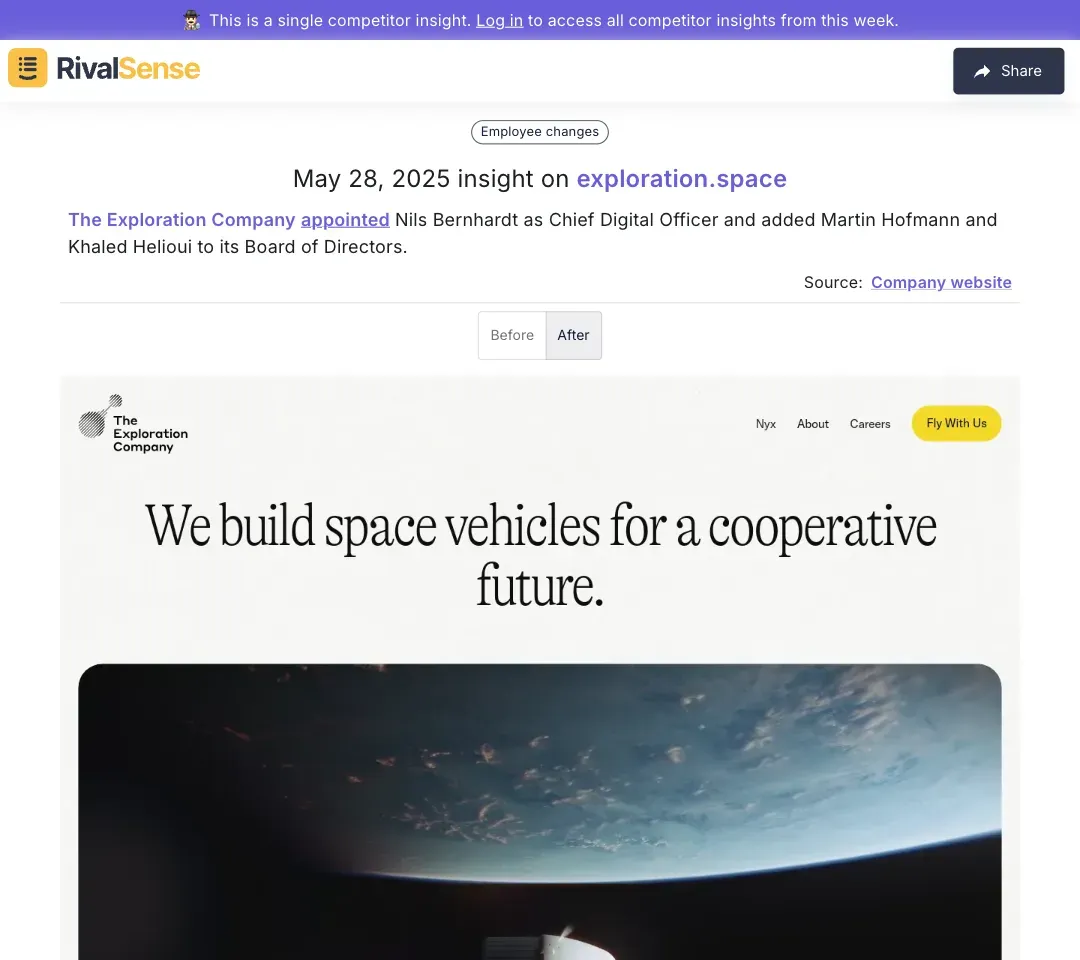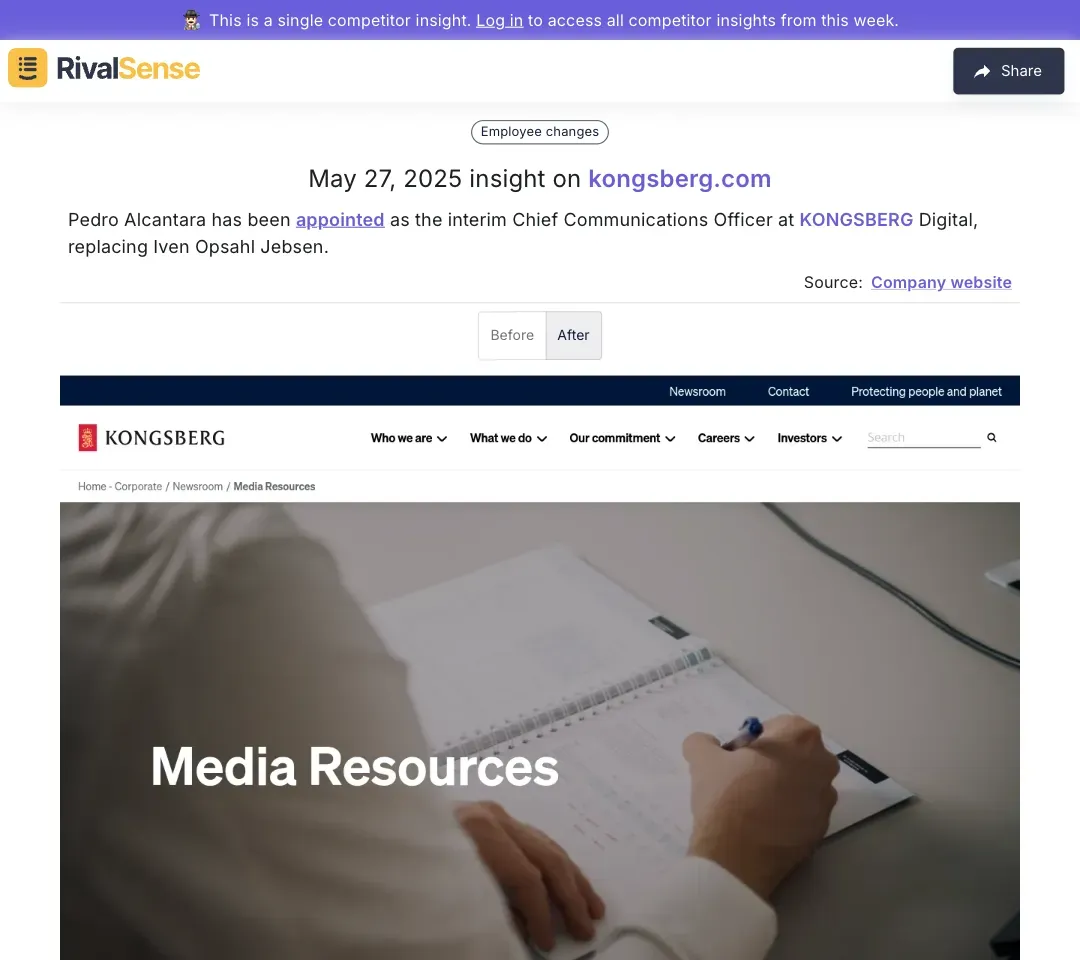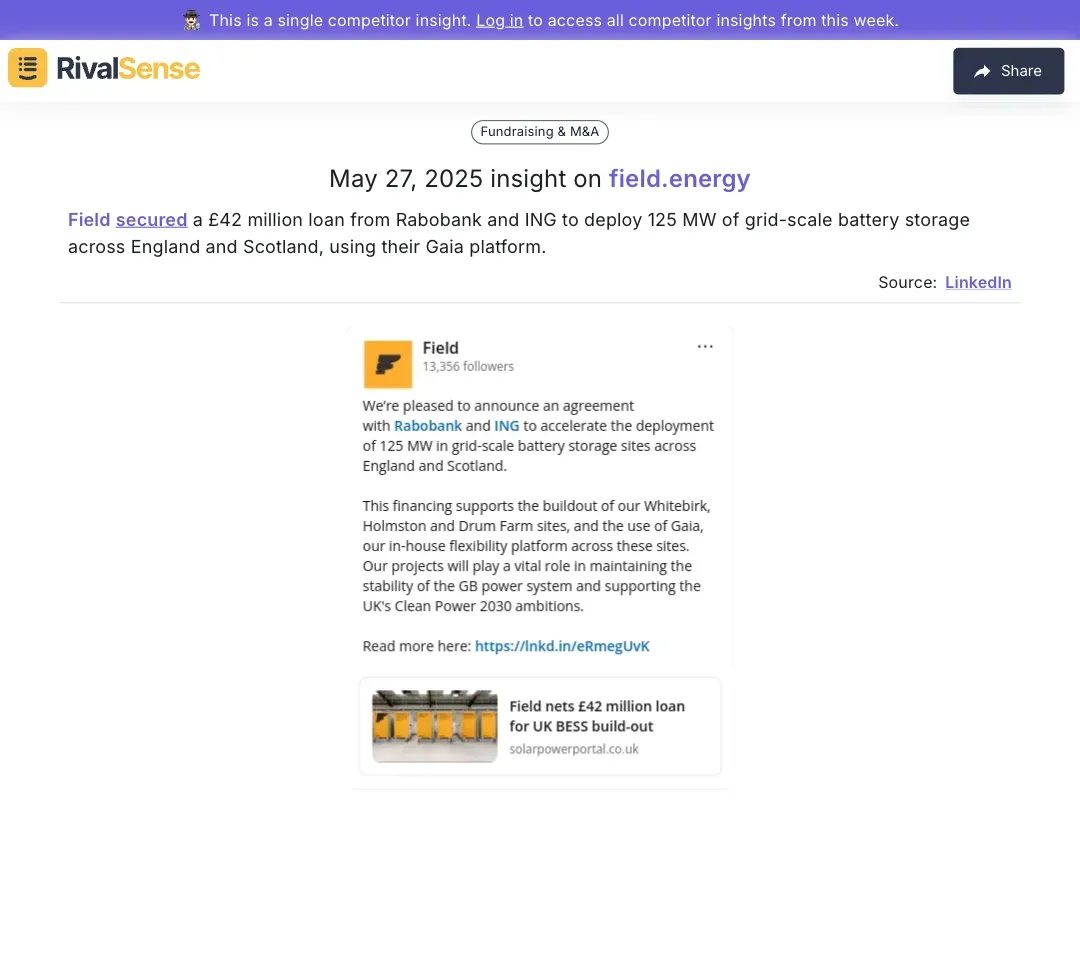5 Key Benefits of Continuous Competitor Monitoring (with Real Examples)
In today's fast-paced business environment, merely reacting to competitors is no longer sufficient—proactive monitoring is essential for survival. Continuous competitor tracking transforms market noise into strategic insights, empowering businesses to anticipate changes and seize opportunities. This approach provides real-time visibility into rivals' activities, enabling smarter decisions that drive sustainable growth.
Why Continuous Monitoring Matters More Than Ever
Traditional quarterly competitor reviews can't keep pace with modern market dynamics, where strategies evolve weekly. Continuous monitoring captures granular changes across product launches, pricing shifts, leadership moves, and financial developments. These insights reveal patterns competitors miss, turning information asymmetry into your strategic advantage.
5 Strategic Benefits of Continuous Tracking
-
Anticipate Competitive Moves 🎯
Spotting product launches or expansions early lets you counter strategically. When competitors reveal development roadmaps, you gain months to refine your offerings or marketing angles.
How RivalSense Helps: Our platform tracks product updates across 80+ sources, delivering alerts before public announcements—like detecting a rival's SaaS feature beta through GitHub commits. -
Uncover Hidden Market Gaps 🌐
Competitor weaknesses often highlight underserved customer needs. A pattern of negative reviews about their support might reveal your chance to dominate with superior service.
How RivalSense Helps: We correlate social sentiment with feature releases, identifying unmet demands—like noticing trending complaints about complex pricing that your simplified model could solve. -
Track Industry Shifts in Real-Time 📈
Regulatory changes or emerging technologies reshape markets overnight. Continuous monitoring spots these inflection points—like new data privacy laws affecting your rivals' ad targeting capabilities.
How RivalSense Helps: We scan registries and news sources for compliance updates, giving you weeks to adapt—such as flagging FDA guideline changes impacting medtech competitors. -
Benchmark Your Performance 📊
Quantifiable comparisons reveal true competitive positioning. If rivals achieve 20% higher retention after UI redesigns, that's your benchmark for UX investments.
How RivalSense Helps: Our SWOT dashboards track KPIs like feature adoption rates, showing exactly where you lead or lag—such as e-commerce checkout speed comparisons. -
Mitigate Strategic Blind Spots ⚠️
Leadership changes or funding rounds signal coming disruptions. A new C-suite hire often precedes pivots—ignoring these signs risks costly surprises.
How RivalSense Helps: We monitor executive movements and investments, alerting you to hidden risks—like detecting a competitor's new AI hire signaling tech stack changes.
Real-World Insights Driving Strategy
These RivalSense discoveries show how granular tracking creates advantage:
-
Leadership Shifts Signal Strategy Changes

The Exploration Company appointed Nils Bernhardt as Chief Digital Officer and added two board members.
Strategic value: New digital leadership often precedes tech investments—prompting you to audit your own digital roadmap before they gain edge. -
Interim Appointments Reveal Instability

Pedro Alcantara became interim CCO at KONGSBERG Digital, replacing Iven Opsahl Jebsen.
Strategic value: Interim roles may indicate internal turmoil—creating openings to poach talent or highlight your stability in sales pitches. -
Funding Moves Unlock Expansion Plans

Field secured £42M to deploy battery storage across UK using Gaia platform.
Strategic value: Competitor financing reveals growth priorities—allowing you to strengthen partnerships in their target regions before they scale.
Actionable Implementation Framework
Turn insights into results with this proven approach:
✅ Step 1: Prioritize Competitors
| Type | Focus Areas |
|---|---|
| Direct rivals | Pricing, features, customer reviews |
| Indirect | Market expansion, partnerships |
| Emerging | Funding rounds, leadership changes |
✅ Step 2: Establish Tracking Cadence
- ⏰ Daily: Social/media mentions
- 📆 Weekly: Product/website changes (use RivalSense automated reports)
- 📊 Monthly: Performance benchmarking
✅ Step 3: Act on Insights
- Pricing shifts → Run targeted promotions within 48 hours
- Feature launches → Release comparison guides for sales teams
- Leadership changes → Update competitive battle cards
✅ Step 4: Review & Optimize
Quarterly audits should answer:
🔍 Are we tracking the right competitors?
📈 Which insights drove measurable ROI?
🛠 Where do we need deeper intelligence?
Why RivalSense Delivers Unmatched Coverage
While manual monitoring misses 70% of critical changes (Harvard Business Review), RivalSense automates detection across:
- 🚀 Product launches & updates
- 💰 Pricing/packaging changes
- 🤝 Partnerships & events
- 👔 Executive movements
- 📰 Media/regulatory shifts
Our algorithm scans websites, registries, and social platforms—filtering noise to deliver actionable insights in weekly email digests.
Transform competitive intelligence from reactive to strategic:
Try RivalSense free and get your first competitor report today—spot opportunities before they become threats.
📚 Read more
👉 Unlocking Investment Success: The Strategic Value of Tracking Portfolio Companies
👉 How to Monitor Indirect Competitors: Strategic Guide for Business Leaders
👉 Competitive Intelligence in Medical Aesthetics: A Tactical Case Study
👉 How Pinter's Trooper Deal Ignited a Wave of Competitive Innovation
